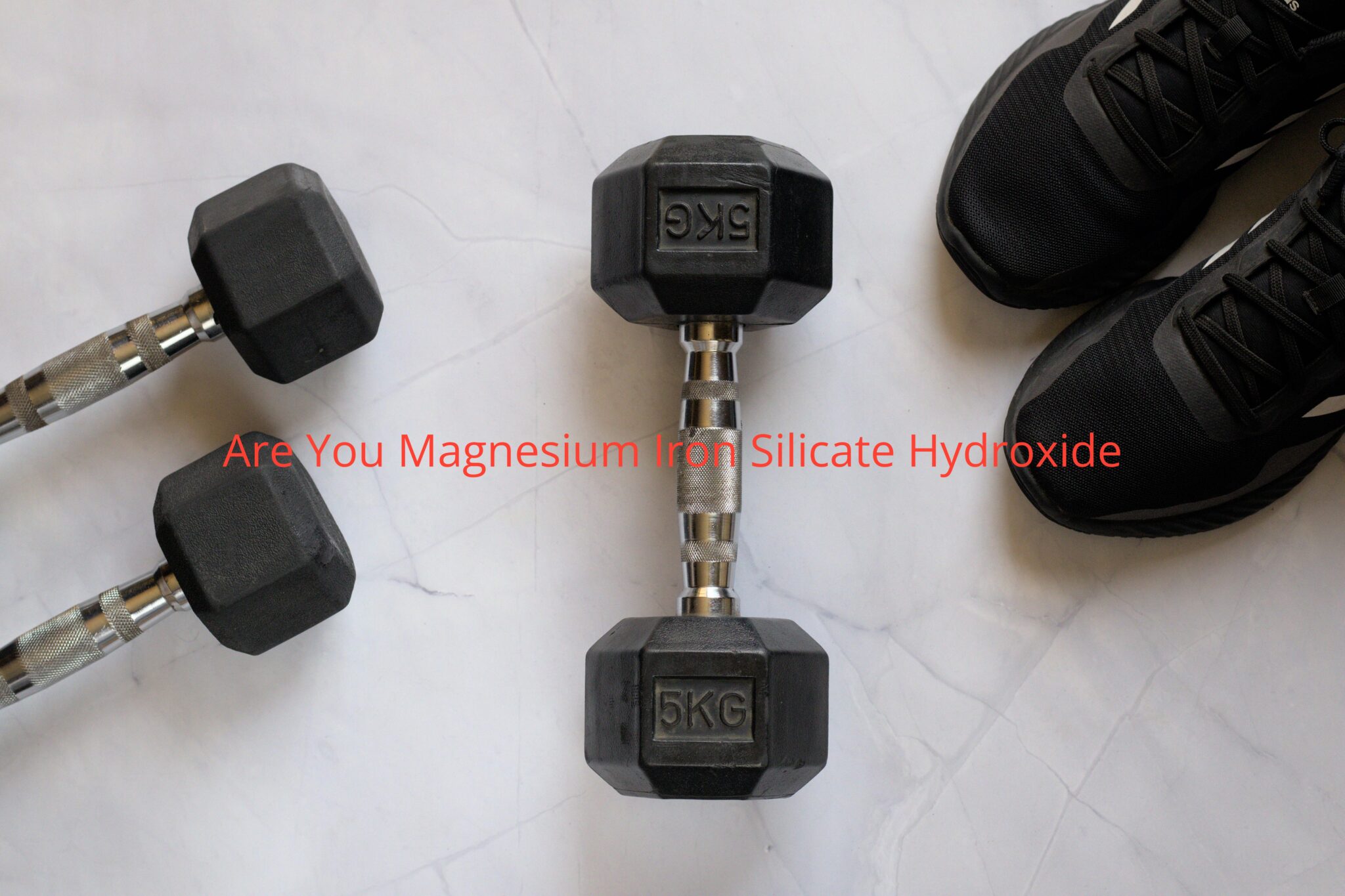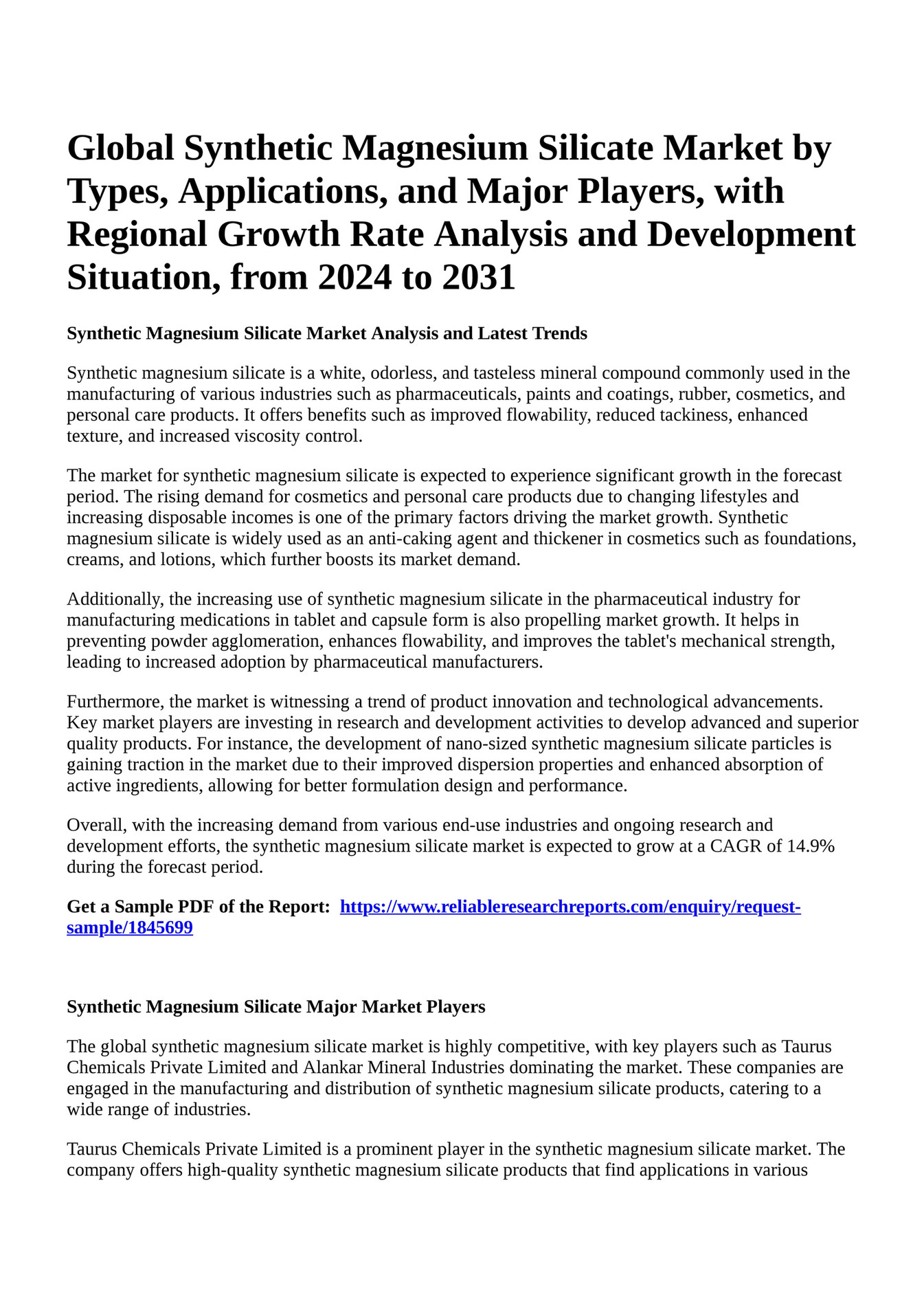Alright folks, let's talk about something that might sound like a tongue-twister but is actually pretty fascinating—magnesium silicate iron hydroxide. Now, before you zone out thinking this is just some scientific jargon, hear me out. This compound plays a crucial role in various industries, from construction to healthcare, and understanding it could unlock doors you never knew existed. So, buckle up and let's dive in!
Imagine a world where materials we use daily are made stronger, more durable, and environmentally friendly. That's where magnesium silicate iron hydroxide steps in. It's not just a random mix of elements; it's a carefully crafted compound designed to solve real-world problems. Whether you're an engineer, a chemist, or simply someone curious about how things work, this article is for you.
Now, if you're thinking, "Why should I care about this?"—here's the deal. This compound affects everything from the buildings we live in to the water purification systems that keep us healthy. Understanding its properties and applications can help you make informed decisions, whether you're choosing materials for your next project or just brushing up on your science knowledge.
- Tamron Halls Husband A Closer Look Into The Man Behind The Iconic Host
- Roland Garros Schedules Your Ultimate Guide To The French Open
What Exactly Is Magnesium Silicate Iron Hydroxide?
Let's break it down. Magnesium silicate iron hydroxide is essentially a mineral compound composed of magnesium, silicon, iron, and hydroxide ions. It's often found in nature as part of various minerals and rocks, and its unique composition makes it incredibly versatile. Picture it as the Swiss Army knife of compounds—always ready to serve a purpose.
This compound isn't just floating around aimlessly; it has specific roles to play. For instance, it can act as a binding agent, a stabilizer, or even a catalyst in certain chemical reactions. Its ability to interact with other elements makes it a favorite in industries that require complex material solutions.
Now, here's where it gets interesting. Depending on the ratios of magnesium, silicon, iron, and hydroxide, the properties of this compound can vary widely. Think of it like baking—adding too much sugar or flour changes the taste of your cake. Similarly, tweaking the composition of this compound alters its functionality.
- Did Danny Thomas Lose A Child To Cancer Unveiling The Truth Behind The Tragic Story
- Goran Viscaronnji263 The Talented Actor Who Stole Hearts On Er And Beyond
Why Is It So Important?
Here's the kicker—magnesium silicate iron hydroxide isn't just some obscure compound reserved for scientists in lab coats. It's actually a game-changer in multiple fields. Its importance stems from its ability to enhance strength, durability, and sustainability in materials.
- In construction, it's used to improve the structural integrity of concrete and other building materials.
- In water treatment, it helps remove impurities and harmful substances, making water safe for consumption.
- In pharmaceuticals, it's used as a filler or binder in drug formulations, ensuring consistent dosage and stability.
So, whether you're building a skyscraper, purifying drinking water, or developing life-saving medications, magnesium silicate iron hydroxide could be your secret weapon.
Where Is Magnesium Silicate Iron Hydroxide Found?
Nature is full of surprises, and magnesium silicate iron hydroxide is no exception. This compound is commonly found in mineral deposits around the world. Places like Brazil, China, and India are known for their rich mineral resources, making them hotspots for extraction.
But here's the thing—mining these compounds isn't as simple as digging a hole. It requires careful planning, advanced technology, and a focus on sustainability. The process involves identifying suitable mineral deposits, extracting the raw materials, and refining them into usable forms.
And let's not forget the environmental impact. Responsible mining practices are crucial to ensure that we don't harm the planet while harnessing these valuable resources. Companies are increasingly adopting eco-friendly methods to minimize their carbon footprint and preserve natural habitats.
Common Sources of Magnesium Silicate Iron Hydroxide
Here's a quick rundown of where you're most likely to find this compound:
- Serpentine Minerals: These are a group of minerals that often contain magnesium silicate and are widely distributed across the globe.
- Talc Deposits: Talc, known for its softness and smooth texture, is another source rich in magnesium silicate.
- Clay Minerals: Certain types of clay, such as kaolinite, contain significant amounts of silicate and hydroxide, making them ideal for extraction.
Each of these sources has its own unique characteristics, which influence the final properties of the compound. It's like choosing the right ingredients for a recipe—each one adds something special to the mix.
How Is Magnesium Silicate Iron Hydroxide Used?
Alright, so we've established what it is and where it comes from. But how exactly is it used? Let me break it down for you. This compound finds applications in a variety of industries, each leveraging its unique properties to solve specific challenges.
In the construction industry, magnesium silicate iron hydroxide is used to enhance the performance of building materials. It improves the strength and durability of concrete, making structures more resilient to environmental factors like temperature changes and moisture.
When it comes to water treatment, this compound shines as a powerful purification agent. It binds to impurities and contaminants, effectively removing them from water supplies. This is especially important in regions where access to clean water is limited.
And let's not forget its role in pharmaceuticals. Magnesium silicate iron hydroxide acts as a stabilizer and filler in drug formulations, ensuring that medications are safe, effective, and consistent.
Applications Across Industries
Here's a closer look at how different sectors utilize this compound:
- Construction: Enhances the strength and durability of concrete and other building materials.
- Water Treatment: Purifies water by removing impurities and harmful substances.
- Pharmaceuticals: Used as a filler and stabilizer in drug formulations.
- Cosmetics: Acts as a thickening agent in skincare and beauty products.
As you can see, magnesium silicate iron hydroxide is a versatile player in the world of materials science. Its ability to adapt to different environments and applications makes it indispensable in modern industries.
The Science Behind Magnesium Silicate Iron Hydroxide
Now, let's get into the nitty-gritty. What makes magnesium silicate iron hydroxide so special? It all boils down to its chemical structure and properties. This compound is composed of magnesium, silicon, iron, and hydroxide ions, each contributing to its unique characteristics.
Magnesium, for instance, is known for its lightweight yet strong properties, making it ideal for structural applications. Silicon, on the other hand, enhances stability and resistance to wear and tear. Iron adds strength and durability, while hydroxide ions play a crucial role in chemical reactions.
Together, these elements form a compound that's not only robust but also highly reactive. This reactivity allows it to interact with other substances, making it a valuable component in various processes.
Key Properties of Magnesium Silicate Iron Hydroxide
Here are some of the standout properties of this compound:
- High Strength: Provides exceptional durability and resistance to external forces.
- Chemical Stability: Remains stable under varying conditions, ensuring consistent performance.
- Environmental Compatibility: Can be used in eco-friendly applications without harming the environment.
These properties make magnesium silicate iron hydroxide a go-to choice for industries seeking reliable and sustainable solutions.
Challenges and Solutions in Working with Magnesium Silicate Iron Hydroxide
Of course, nothing is perfect, and working with magnesium silicate iron hydroxide comes with its own set of challenges. One of the biggest hurdles is ensuring consistent quality during extraction and refinement. Variations in mineral composition can affect the final product's performance, so meticulous control is essential.
Another challenge is balancing cost and efficiency. While this compound offers numerous benefits, its extraction and processing can be expensive. Researchers and engineers are constantly exploring ways to optimize these processes, making them more cost-effective without compromising quality.
And then there's the environmental factor. Mining and refining mineral compounds can have a significant impact on the planet. Companies are investing in sustainable practices to mitigate these effects, ensuring that future generations can benefit from these resources without paying the price.
Potential Solutions to Common Challenges
Here are some strategies being employed to address these challenges:
- Advanced Extraction Techniques: Using cutting-edge technology to improve efficiency and reduce waste.
- Sustainable Practices: Implementing eco-friendly methods to minimize environmental impact.
- Research and Development: Investing in studies to discover new applications and optimize existing ones.
By tackling these challenges head-on, industries can unlock the full potential of magnesium silicate iron hydroxide while ensuring a brighter future for everyone.
The Future of Magnesium Silicate Iron Hydroxide
So, where does this compound go from here? The future looks bright for magnesium silicate iron hydroxide, with ongoing research and development paving the way for new applications and innovations. Scientists are exploring its potential in emerging fields like nanotechnology and renewable energy.
In nanotechnology, this compound could be used to create advanced materials with unprecedented properties. Imagine coatings that are not only durable but also self-healing or materials that can store energy more efficiently. The possibilities are endless.
When it comes to renewable energy, magnesium silicate iron hydroxide could play a role in developing more efficient solar panels and energy storage systems. Its ability to interact with other elements makes it a promising candidate for these applications.
Innovations on the Horizon
Here are some exciting developments to watch out for:
- Advanced Materials: Creating next-generation materials with superior strength and functionality.
- Energy Solutions: Developing sustainable energy storage and generation technologies.
- Environmental Applications: Enhancing water purification and air quality systems.
As technology continues to evolve, the role of magnesium silicate iron hydroxide will only grow more significant. It's a compound with a bright future, and we're just scratching the surface of what it can do.
Conclusion: Why Magnesium Silicate Iron Hydroxide Matters
Let's wrap things up. Magnesium silicate iron hydroxide is more than just a compound—it's a game-changer in various industries. From strengthening buildings to purifying water and formulating life-saving medications, its applications are vast and varied.
As we continue to push the boundaries of science and technology, this compound will undoubtedly play a crucial role in shaping the future. Its versatility, combined with ongoing research and development, ensures that it remains relevant and valuable for years to come.
So, what's next? If you've found this article informative, why not share it with others who might be interested? Knowledge is power, and the more we understand about materials like magnesium silicate iron hydroxide, the better equipped we are to tackle the challenges of tomorrow.
Table of Contents
Magnesium Silicate Iron Hydroxide: A Deep Dive Into Its Uses, Benefits, and Applications
What Exactly Is Magnesium Silicate Iron Hydroxide?
Where Is Magnesium Silicate Iron Hydroxide Found?
Common Sources of Magnesium Silicate Iron Hydroxide
How Is Magnesium Silicate Iron Hydroxide Used?
Applications Across Industries
The Science Behind Magnesium Silicate Iron Hydroxide
Key Properties of Magnesium Silicate Iron Hydroxide
Challenges and Solutions in Working with Magnesium Silicate Iron Hydroxide
Potential Solutions to Common Challenges
The Future of Magnesium Silicate Iron Hydroxide
Conclusion: Why Magnesium Silicate Iron Hydroxide Matters



Detail Author:
- Name : Virgil Hoppe
- Username : kylie56
- Email : rutherford.selmer@yahoo.com
- Birthdate : 2000-09-10
- Address : 1089 McCullough Viaduct Marvinfort, DC 66165
- Phone : +1.302.928.2486
- Company : Auer PLC
- Job : Pantograph Engraver
- Bio : Numquam velit amet iure quia dolores accusamus. Dolore sed aperiam asperiores velit sapiente. Quis eveniet et quam deleniti qui minima possimus. Voluptatem est accusantium nisi quo possimus.
Socials
tiktok:
- url : https://tiktok.com/@wiley_id
- username : wiley_id
- bio : Voluptate aspernatur saepe temporibus.
- followers : 4293
- following : 2990
linkedin:
- url : https://linkedin.com/in/wileyaufderhar
- username : wileyaufderhar
- bio : Impedit qui veniam ratione incidunt magni.
- followers : 6439
- following : 2493